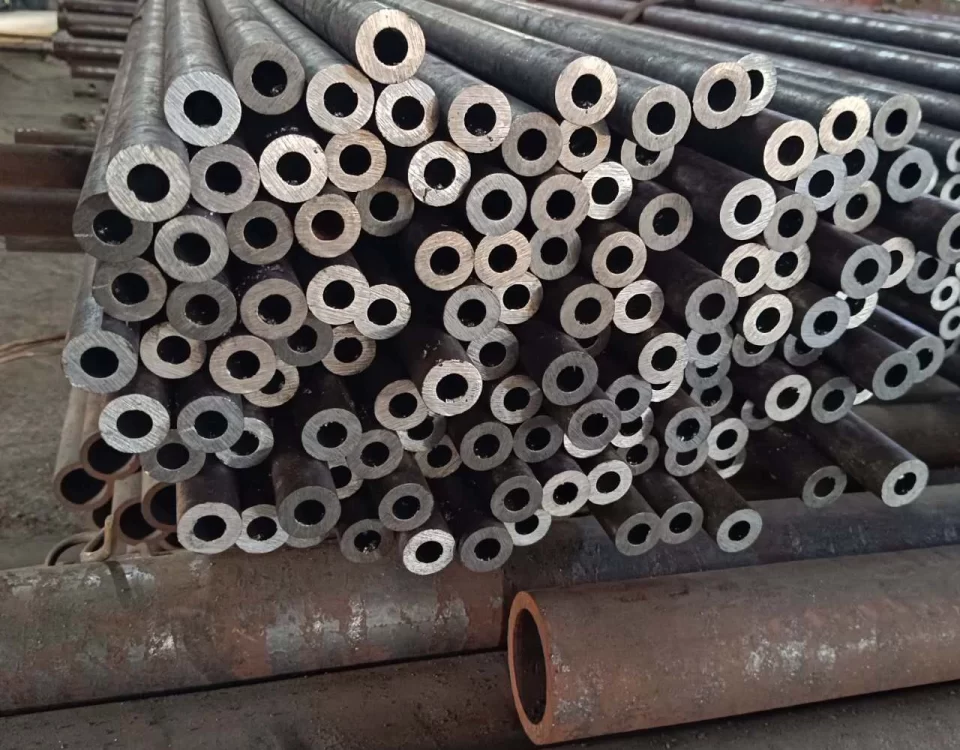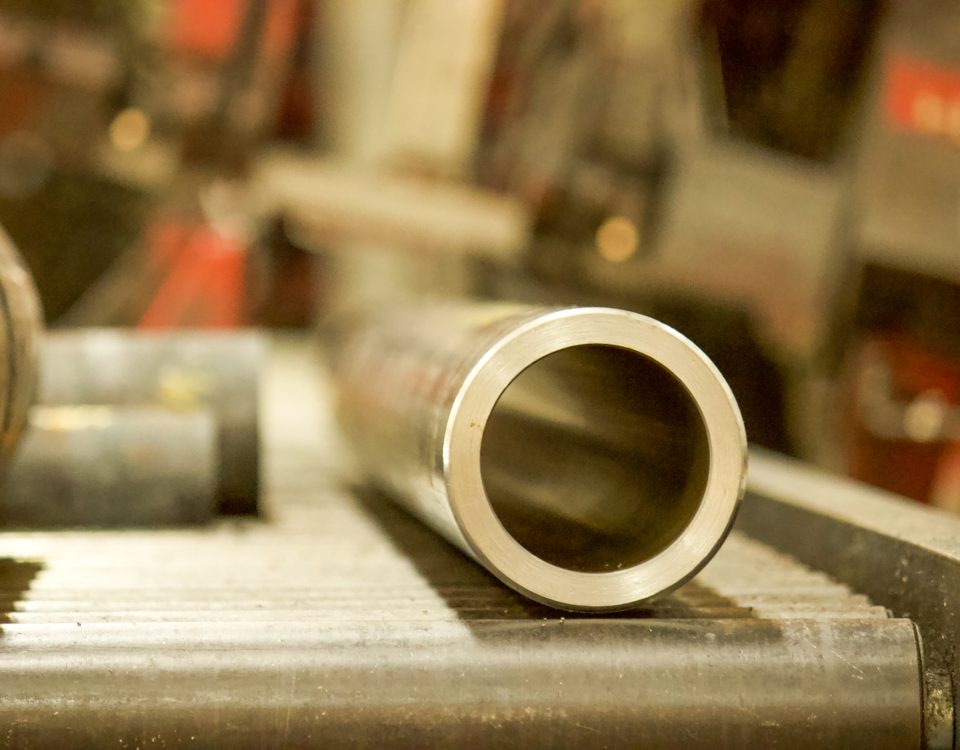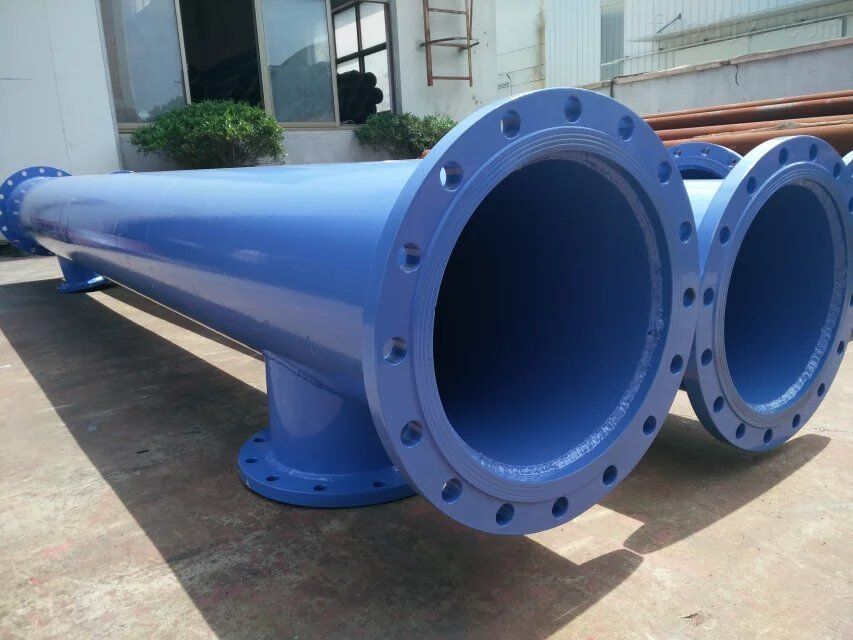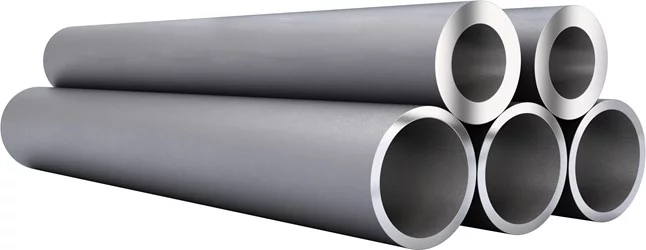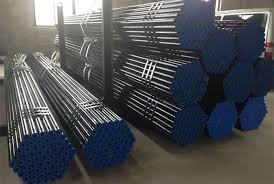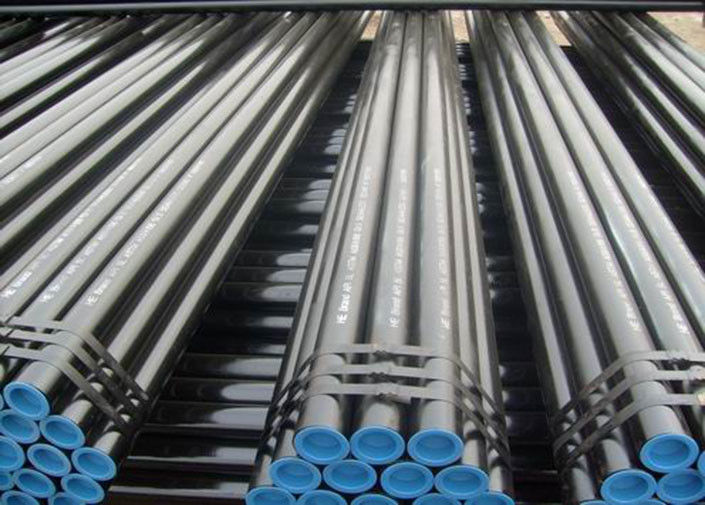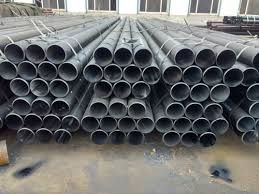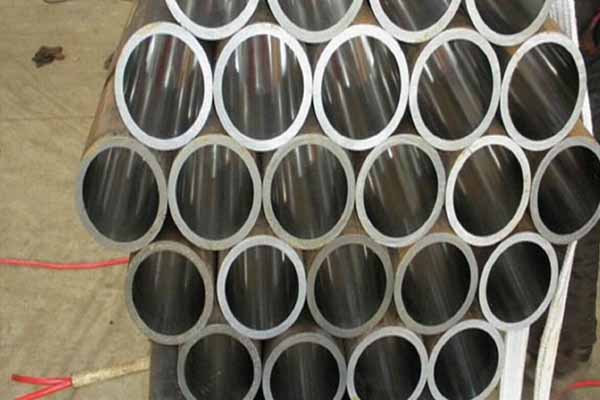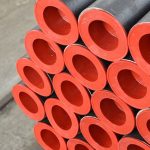
A334 Seamless Alloy Steel Pipe | GR.1, GR.6, GR.8 for Low Temperature Service
November 1, 2025
The Unseen Integrity: A Comprehensive Exploration of JIS G3445 STKM Carbon Steel Seamless Pipe for Machine Structural Purposes
The landscape of modern mechanical engineering is defined by a relentless pursuit of reliability, precision, and structural efficiency. At the very core of this landscape, forming the sinews and skeletal structure of countless machines—from the heavy-duty machinery shaping our infrastructure to the delicate, high-speed components driving automation—lies the humble yet critically important material known as the carbon steel seamless pipe. Specifically, the Japanese Industrial Standard (JIS) G3445 for Carbon Steel Tubes for Machine Structural Purposes, often designated by the material prefix STKM, represents a globally recognized benchmark for this class of tubing. This standard is not merely a set of dimensions; it is an integrated engineering philosophy, a promise of metallurgical consistency and dimensional accuracy essential for dynamic and load-bearing applications.
To understand the JIS G3445 STKM pipe is to embark on a journey that transcends the simple designation of ‘steel tube.’ It involves a deep appreciation for the seamless manufacturing process, the controlled alchemy of chemical composition, and the transformative power of heat treatment. The final product is a testament to meticulous engineering, designed to perform under stress and fatigue where the failure of a single component could lead to catastrophic system failure. This article seeks to fully delineate the characteristics, specifications, and profound engineering implications of this essential industrial material, laying bare the complex requirements that elevate it from a raw material to a critical machine element.

The Genesis of Reliability: Understanding the JIS G3445 Standard
The Japanese Industrial Standards, or JIS, carry a weight of quality and technical rigor that is respected worldwide. Within the vast expanse of metal specifications, JIS G3445 carves out a specific niche: Carbon Steel Tubes for Machine Structural Purposes. This specific scope is crucial. Unlike pressure piping standards (e.g., JIS G3454 or G3455) where the primary concern is the containment of internal fluid pressure and temperature, the G3445 standard is overwhelmingly focused on mechanical integrity. The tubes produced under this standard are intended to be integral structural components—members subjected to bending, torsion, cyclical fatigue, and compressive or tensile loads. They serve as hydraulic cylinders, automotive suspension parts, shafts, axles, and essential frameworks, where dimensional stability and predictable mechanical properties are non-negotiable.
The ‘STKM’ designation itself stands for Steel Tube for Mechanical use. Within this overarching standard, a spectrum of grades exists, ranging generally from STKM 11A to STKM 20A (and sometimes higher grades like STKM 21A or 22A, though 11 through 20 are most common). This tiered system allows engineers to select a material perfectly optimized for the application’s demands. STKM 11A, often the most ductile grade, is excellent for cold-forming, bending, and applications requiring high elongation, whereas grades like STKM 18A, 19A, or 20A offer significantly higher tensile strength, making them suitable for heavy-duty structural components subjected to higher static and dynamic loads. The decision between these grades is a fine balance between formability (ease of manufacture) and ultimate structural performance (load-bearing capability).
The very essence of the seamless construction method is fundamentally tied to the standard’s purpose. A seamless pipe, typically manufactured through the Mannesmann rotary piercing process or extrusion, lacks a longitudinal weld seam. This absence eliminates the inherent weakest point found in any welded product—the heat-affected zone (HAZ) and the interface of the weld itself. For a component under high cyclical stress (fatigue), the weld seam is a natural stress concentration point and a potential site for crack initiation. By utilizing the seamless method, the pipe’s crystalline structure remains continuous, resulting in isotropic (uniform) properties around the circumference. This uninterrupted integrity is the bedrock of reliability for machine structural applications, allowing the component to be relied upon with greater certainty, especially under dynamic loading conditions.
The philosophical implication of the JIS G3445 STKM standard is a commitment to precision over mere bulk. It signifies a shift from material quantity to material quality, where the control over minor alloying elements, grain structure, and surface finish collectively determines the fitness-for-purpose. This is a standard designed for the engineer who needs to move beyond simple safety factors and toward optimized, material-efficient design.
The Material Alchemy: Chemical Composition and Metallurgical Requirements

The chemical composition of STKM steel tubes is the direct determinant of its final mechanical properties, and the G3445 standard sets forth meticulous requirements for controlling the key elements. Carbon steel, by definition, primarily consists of iron and carbon, but the precise control of manganese (Mn), phosphorus (P), and sulfur (S), along with the absence of high levels of other alloying elements, is what defines the STKM grades.
The maximum permissible levels of impurities, P and S, are particularly stringent in high-quality structural steels. High sulfur content can lead to ‘hot short’ cracking during rolling and negatively impacts ductility and weldability. Phosphorus is detrimental to impact strength, especially at lower temperatures. The G3445 standard ensures that these elements are tightly controlled, often to levels below 0.035% or 0.040%, to guarantee the material’s structural soundness and its ability to withstand forming and welding operations without compromise.
The primary mechanical differentiator between the various STKM grades is often the Carbon (C) and Manganese (Mn) content. As one moves from the lower strength grades (STKM 11A, 12) to the higher strength grades (STKM 17A, 20A), the Carbon and Manganese maximums systematically increase. Carbon is the primary strengthening agent in steel; however, its increase comes at the cost of ductility and weldability. Manganese is a crucial element that improves the hot-working characteristics and also increases strength and hardness by acting as a powerful solid solution strengthener. The precise balancing act between these elements allows manufacturers to tailor the steel’s intrinsic properties to meet the specific tensile requirements of each grade.
The following table outlines the general chemical composition requirements, emphasizing the subtle but significant variations across the most common grades, noting that the standard allows for slight variations depending on the manufacturing method and specific agreement:
| Material Grade | C (max %) | Si (max %) | Mn (max %) | P (max %) | S (max %) |
| STKM 11A | 0.15 | 0.35 | 0.60 | 0.040 | 0.040 |
| STKM 12A/B/C | 0.20 | 0.35 | 0.80 | 0.040 | 0.040 |
| STKM 13A/B/C | 0.25 | 0.35 | 1.00 | 0.040 | 0.040 |
| STKM 15A/B/C | 0.30 | 0.35 | 1.20 | 0.040 | 0.040 |
| STKM 17A/B/C | 0.35 | 0.35 | 1.50 | 0.040 | 0.040 |
| STKM 20A | 0.45 | 0.35 | 1.60 | 0.040 | 0.040 |
The seemingly small percentage increments of Carbon and Manganese are a testament to the metallurgical precision required. An engineer specifying STKM 15C, for instance, is relying on the manufacturer’s rigorous process control to ensure the carbon level falls within the window that provides the requisite tensile strength without rendering the material too brittle for subsequent machining or cold-forming operations. This chemical blueprint is the foundation upon which all subsequent mechanical properties are built.
The Forge of Strength: Heat Treatment Requirements

For steel destined for machine structural applications, the raw, as-manufactured state of the material is often insufficient. The forging, piercing, and drawing processes inherent in seamless pipe production introduce internal stresses and yield a microstructure that may not be optimally refined. This is where heat treatment—a controlled process of heating and cooling—becomes a transformative stage, fundamentally altering the steel’s microstructure and, consequently, its mechanical properties. For the JIS G3445 STKM grades, heat treatment is often an essential prerequisite for achieving the required tensile and hardness characteristics.
The specific heat treatment required is often tied to the grade and the required delivery condition. The standard specifies several common heat treatment methods:
- Annealing (A): This process involves heating the steel to a specified temperature, holding it, and then cooling it slowly. Annealing is primarily used to soften the steel, improve its ductility, relieve internal stresses induced by cold work, and refine the grain structure. It is often necessary for the lower STKM grades (like 11A) that are intended for severe bending or complex forming operations. A specialized form, Bright Annealing (BA), is carried out in a controlled inert or reducing atmosphere (like hydrogen or nitrogen) to prevent surface oxidation, resulting in a clean, scale-free, and highly aesthetically suitable finish, often critical for visible hydraulic cylinder applications.
- Normalizing (N): Normalizing involves heating the steel above its upper critical temperature and cooling it in still air. This process yields a finer and more uniform grain size than annealing, which improves both strength and toughness simultaneously. Normalized material is often the standard delivery condition for intermediate-strength STKM grades (like 13C or 15A) and is suitable for general structural use where a good balance of strength and ductility is required.
- Quenching and Tempering (QT): This is the high-performance treatment. Quenching (rapid cooling in water or oil) turns the low-carbon steel’s microstructure into martensite—an extremely hard but brittle phase. Tempering then involves reheating the quenched steel to an intermediate temperature to partially transform the martensite, trading some hardness for significant gains in toughness and ductility. This process is essential for achieving the maximum tensile and yield strength required by the highest STKM grades (e.g., STKM 19A, 20A) and is used for components that will be subjected to high static stress or aggressive fatigue loading.
The manufacturer’s decision on heat treatment is a direct contract with the end-user regarding the material’s performance envelope. A designer specifying an STKM 13C tube that has been Quenched and Tempered is relying on the manufacturer’s ability to precisely control the heating rates, holding times, and cooling rates to achieve the desired microstructure (e.g., tempered sorbite or bainite) that meets the required ultimate tensile strength (UTS) and yield strength (YS) thresholds while maintaining the minimum required elongation.
The Measure of Performance: Tensile Requirements
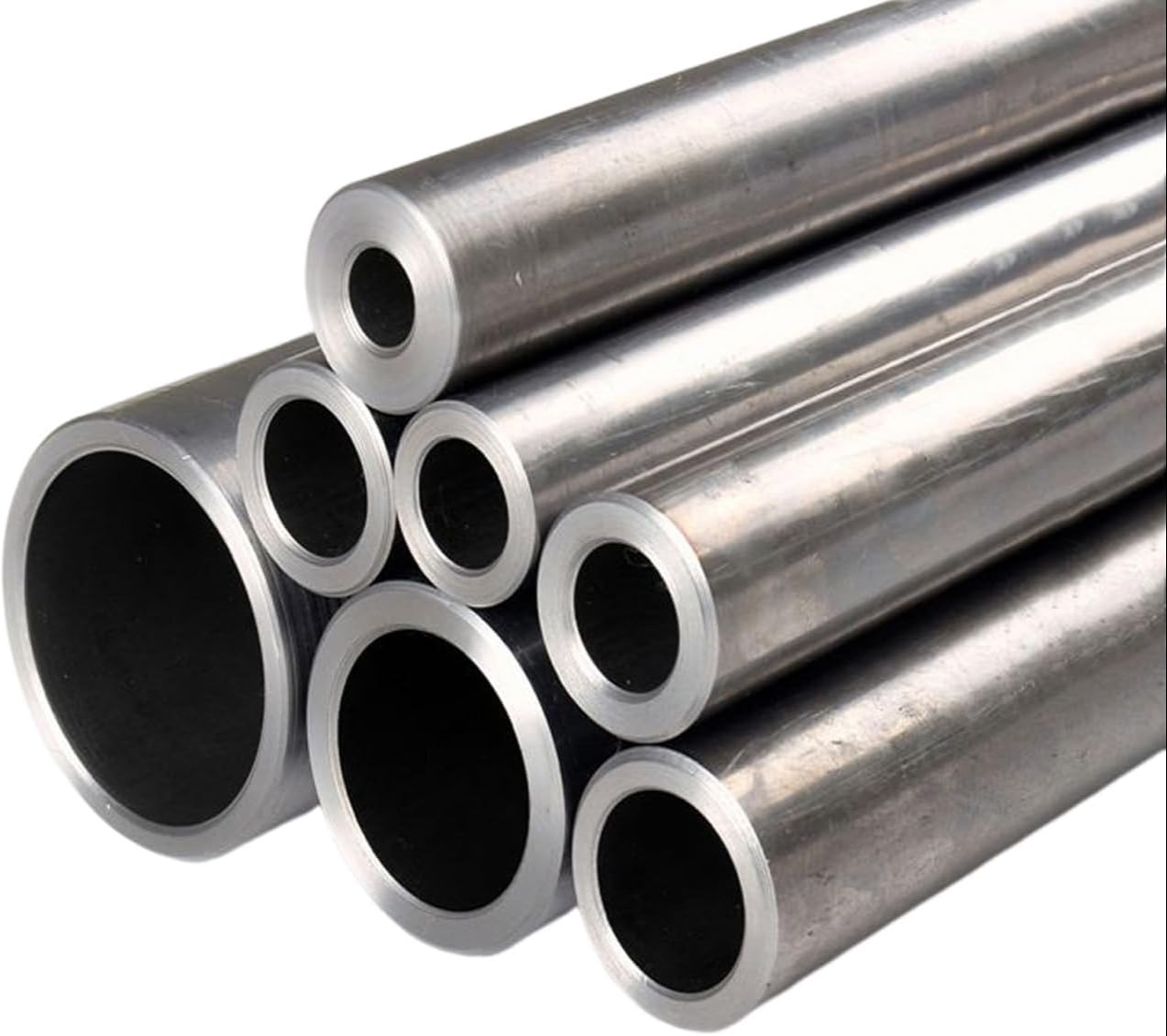
Ultimately, the chemical composition and heat treatment processes converge to define the Tensile Requirements—the material’s measurable response to axial load. These properties—Yield Strength, Tensile Strength, and Elongation—are the most critical mechanical properties for structural applications. The JIS G3445 standard sets minimum requirements for these values, ensuring that an engineer can confidently design a structure knowing the exact point at which the material will deform permanently (Yield Strength) and its ultimate capacity before fracture (Tensile Strength).
The following table provides an illustrative overview of the minimum required Tensile Requirements for the common STKM grades, demonstrating the systematic increase in strength as the carbon content and heat treatment severity increase:
| Material Grade | Heat Treatment | Tensile Strength (UTS) (N/mm²) min | Yield Strength (YS) (N/mm²) min | Elongation (%) min |
| STKM 11A | As-Drawn/Annealed | 290 | 175 | 35 (L), 25 (T) |
| STKM 12A | As-Drawn/Annealed | 340 | 205 | 30 (L), 20 (T) |
| STKM 13A | As-Drawn/Annealed | 370 | 225 | 28 (L), 18 (T) |
| STKM 13C | Normalized/Quenched & Tempered | 440 | 275 | 22 (L), 15 (T) |
| STKM 17A | Normalized | 490 | 345 | 18 (L), 12 (T) |
| STKM 20A | Quenched & Tempered | 590 | 440 | 15 (L), 10 (T) |
| Note: L = Longitudinal Test Piece, T = Transverse Test Piece. Elongation depends on the specific sample gauge length. |
The difference between STKM 11A and STKM 20A is profound. STKM 11A prioritizes Ductility (high elongation), which is essential for manufacturing processes like deep drawing, flaring, or precision bending, often seen in automotive exhaust or seating structures. Conversely, STKM 20A, especially when Quenched and Tempered, boasts nearly double the Yield Strength. This means the STKM 20A tube can carry nearly twice the load before permanent plastic deformation occurs, making it indispensable for high-pressure hydraulic lines, heavy machine frames, or critical structural axles where rigidity and strength are paramount.
The relationship between Yield Strength and Tensile Strength is crucial in design. While UTS defines the absolute breaking point, YS defines the useful limit of the material. In mechanical structural design, the working stress is always kept safely below the Yield Strength to ensure the component returns to its original shape upon load removal. The high YS-to-UTS ratio often achievable with Quenched and Tempered STKM grades is an indicator of efficient, high-strength material—it offers significant working strength for its given mass.
Dimensions and the Geometry of Precision: Thickness Schedules and Tolerance
While the material properties define what the steel can withstand, the Dimensions and Tolerances define how it integrates into the machine. For tubes specified under JIS G3445, precision is paramount because the tubes often interface with other precision-machined components—bearings, hydraulic seals, fittings, or other structural members.
The standard covers a wide range of Outer Diameters (OD) and Wall Thicknesses (WT), which are often correlated with standard pipe schedules but are more precisely defined for mechanical applications. In structural engineering, the wall thickness is not merely a nominal value; its consistency directly impacts the section modulus (a measure of bending strength) and the second moment of area (a measure of stiffness). Any deviation in wall thickness leads to an unpredictable shift in these critical structural properties.
Tolerance of Thickness Schedules
The tolerance on wall thickness is a key specification for STKM tubes. Unlike commodity piping, where generous tolerances might be acceptable, machine structural tubing requires tight control. The standard thickness tolerance for seamless carbon steel tubes typically adheres to specific percentages of the nominal wall thickness, and these tolerances are non-symmetrical in many cases to account for manufacturing process variations.
| Parameter | Tolerance Requirement (General Guideline) | Engineering Implication |
| Outside Diameter (OD) | $\pm 0.5\%$ or $\pm 0.3 \text{ mm}$ (whichever is greater, depends on size) | Crucial for fitting into bearing housings, mounting brackets, or clamping mechanisms. |
| Wall Thickness (WT) / Thickness Schedule | $-12.5\%$ to $+12.5\%$ (Often $\pm 10\%$ for high-precision grades) | Direct impact on the Section Modulus (bending strength) and internal pressure capability (for cylinders). |
| Ovality (Out-of-Roundness) | Typically kept within the OD tolerance limits. | Essential for proper sealing in hydraulic applications and concentric rotation in shaft applications. |
| Straightness | Max deviation of 1/2000 of the total length. | Critical for linear actuation systems, drive shafts, and long structural members to avoid buckling and vibration. |
The Wall Thickness Tolerance (often specified as $\pm 10\%$ or $\pm 12.5\%$ of the nominal wall thickness, depending on the specific grade and diameter-to-thickness ratio) is an area of intense quality control. For example, if a nominal wall thickness is $10.0 \text{ mm}$ and the tolerance is $\pm 10\%$, the actual wall thickness must be between $9.0 \text{ mm}$ and $11.0 \text{ mm}$.
In the case of hydraulic cylinder tubing, which utilizes the STKM standard extensively, the inner diameter (ID) tolerance is equally, if not more, critical than the OD tolerance. The ID must be extremely tightly controlled to allow for proper piston seal fitment, requiring an often tighter tolerance band (e.g., $\pm 0.1 \text{ mm}$ or less) and a specified surface roughness ($R_a$ value) to minimize friction and prevent seal wear. These inner diameter specifications push the manufacturing requirement beyond basic JIS G3445, requiring additional specification such as Honed Bore or Skived and Roller Burnished (SRB) tubes, which rely on the underlying G3445 material integrity.
Features That Define Excellence: Why STKM Seamless
The widespread adoption of JIS G3445 STKM seamless pipe is driven by a unique combination of features that address the multifaceted demands of machine design. These features, often resulting from the synergy between the seamless manufacturing process and the controlled metallurgy, define the material’s competitive advantage.
| Feature Category | Descriptive Feature | Engineering Benefit and Application Context |
| Structural Integrity | Seamless Homogeneity | Eliminates the weld zone, which is a stress riser; crucial for high fatigue, high-stress, and hydraulic applications where structural failure cannot be tolerated. |
| Load-Bearing | High Yield Strength | Especially in QT grades (STKM 17A to 20A), the high YS minimizes permanent deformation, allowing for more efficient, lighter-weight design. |
| Workability | Excellent Ductility & Formability | Lower grades (STKM 11A, 12A) are highly formable for bending, swaging, flaring, and cold-drawing, essential for complex tubing runs and automotive parts. |
| Finish Quality | Superior Surface Finish (Internal/External) | Required for hydraulic cylinder walls (internal finish) and external visual/coating applications (external finish); enables better corrosion resistance and seal performance. |
| Weldability | Controlled Carbon Equivalent | Low P and S content and controlled C/Mn ensure predictable and reliable welding into assemblies, provided appropriate pre- and post-weld treatments are applied. |
| Consistency | Tight Dimensional Tolerances | Guarantees component interchangeability, predictable performance, and minimal variation in weight/structural properties, which is vital in mass production and dynamic balance. |
The inherent strength and consistency of the material allow engineers to employ a concept known as stress intensification factor (SIF) reduction. Because the seamless pipe lacks the stress concentration inherent in a seam, a designer can often use a pipe with a lower nominal wall thickness than a comparable welded pipe for the same load, resulting in significant weight and cost savings—a powerful advantage in automotive, aerospace, and portable machinery design.
The Theatre of Operation: Application of JIS G3445 STKM Pipe
The deployment of JIS G3445 STKM seamless pipe spans virtually every sector where motion, structure, and reliable power transmission are required. It is the unheralded workhorse underpinning industrial functionality.
1. Automotive and Transportation:
- Suspension Components: Axles, shock absorber bodies, and structural cross-members utilize high-strength STKM grades (17A, 20A) for their superior fatigue resistance and strength-to-weight ratio.
- Chassis and Frame: Lighter-weight, high-strength tubular frames for specialized vehicles, motorcycles, and race cars.
- Propeller Shafts and Drive Shafts: Where dimensional consistency and high torsional strength are required for power transmission.
2. Hydraulic and Pneumatic Systems:
- Cylinder Barrels (Honed Tubing): This is one of the most critical applications. The seamless construction is essential for high-pressure integrity, and the material (often STKM 13C or 17A) provides the necessary strength, while the inner surface is precision honed or skived/roller burnished to achieve the mirror finish required for piston seal longevity.
- Fluid Power Lines: High-pressure hydraulic and lubrication lines where burst strength and reliability are paramount.
3. General Machinery and Industrial Equipment:
- Machine Tool Parts: Spindles, shafts, and guides that require good wear resistance and structural rigidity.
- Rollers and Conveyor Systems: Tubing used for industrial rollers, where straightness, concentricity, and predictable wall thickness are necessary for balanced, high-speed operation.
- Construction Equipment: Boom components, stabilizers, and lifting gear in cranes and excavators, demanding the highest strength and structural reliability.
The diversity of these applications underscores the material’s versatility. From the simple, easily bendable STKM 11A for furniture and simple fixtures to the intensely controlled STKM 20A for extreme load-bearing components, the G3445 standard provides a coherent family of materials tailored for the vast spectrum of mechanical engineering challenges.
The JIS G3445 standard is comprehensive, defining a wide range of carbon steel tubes for Machine Structural Purposes (STKM).1 The extensive list of grades you provided (STKM 11A through STKM 20A) highlights the standard’s versatility, allowing engineers to choose materials based on required strength, formability, and manufacturing process.
The primary difference between the grades is the base carbon/manganese content, which dictates the minimum required Tensile Strength (TS) and Yield Strength (YS). The A, B, or C suffix indicates the degree of finishing or heat treatment, which further refines the mechanical properties.2
Here is a detailed breakdown of the STKM grades, categorized by their base number (strength group) and the meaning of the suffix letters.
1. MORE JIS G3445 STKM Grades Overview
The number in the STKM designation (e.g., 11A, 13C, 20A) corresponds to the strength level, with higher numbers indicating higher minimum tensile strength, usually achieved through increased carbon/manganese content and/or more rigorous heat treatment.
The letter suffix (A, B, C) denotes the specific manufacturing, cold-working, or heat treatment condition, which is critical for defining the final mechanical properties and tolerances:3
- A: Generally refers to the most basic condition (often hot-finished or cold-finished without specific, high-level heat treatment or cold work for strength). It is the most ductile condition within its grade.
- B: Indicates a higher degree of cold work or controlled normalizing compared to ‘A’, resulting in increased strength and reduced ductility.
- C: Signifies the highest strength condition within its number group, typically achieved through Quenching and Tempering (Q&T) or significant cold reduction, resulting in the highest yield and tensile strength, but the lowest elongation (ductility).
2. Chemical Composition of STKM Grades (Max %)
The general chemical composition requirements set the stage for the material’s potential strength. As the grade number increases, the maximum allowable Carbon (C) and Manganese (Mn) content typically increases to achieve higher strength.
| Grade | C (max %) | Si (max %) | Mn (max %) | P (max %) | S (max %) | Notes |
| STKM 11A | 0.12 | 0.35 | 0.60 | 0.040 | 0.040 | Lowest C content, excellent formability. |
| STKM 12A/B/C | 0.20 | 0.35 | 0.60 | 0.040 | 0.040 | Low-to-medium strength. Common base for forming. |
| STKM 13A/B/C | 0.25 | 0.35 | 0.90 | 0.040 | 0.040 | Higher C/Mn, better strength than STKM 12. |
| STKM 14A/B/C | 0.30 | 0.35 | 1.00 | 0.040 | 0.040 | Used for parts requiring moderate strength. |
| STKM 15A/C | 0.35 | 0.35 | 1.00 | 0.040 | 0.040 | Higher Carbon range. |
| STKM 16A/C | 0.45 | 0.35 | 1.00 | 0.040 | 0.040 | Suitable for heat treatment (e.g., carburizing). |
| STKM 17A/C | 0.55 | 0.35 | 1.10 | 0.040 | 0.040 | Used for medium-to-high strength machine parts. |
| STKM 18A/B/C | 0.55 | 0.55 | 1.50 | 0.040 | 0.040 | High-strength group, often used in Q&T condition. |
| STKM 19A/C | 0.55 | 0.55 | 1.60 | 0.040 | 0.040 | Very high strength, suitable for demanding applications. |
| STKM 20A | 0.60 | 0.55 | 1.60 | 0.040 | 0.040 | Highest strength, generally for quenched/tempered use. |
3. Mechanical Properties of STKM Grades (Minimum Requirements)
The table below summarizes the core difference between the grades: the minimum required Tensile Strength (TS) and Yield Strength (YS), and the corresponding Elongation (Ductility), which decreases as strength increases.4
| Grade | Minimum Tensile Strength (N/mm2) | Minimum Yield Strength (N/mm2) | Min Elongation (%) | Typical Condition |
| STKM 11A | 290 | 175 | 35 | Most ductile, low-stress structures. |
| STKM 12A | 340 | 205 | 35 | Standard for forming/bending. |
| STKM 12B | 390 | 275 | 25 | Medium-strength cold-drawn. |
| STKM 12C | 470 | 355 | 20 | High-strength cold-drawn or Heat Treated. |
| STKM 13A | 370 | 215 | 30 | Base medium-strength structural tube. |
| STKM 13B | 440 | 305 | 20 | Medium-high strength cold-drawn. |
| STKM 13C | 510 | 380 | 15 | Critical for Hydraulic Cylinder barrels (requires precision honing). |
| STKM 14A | 410 | 245 | 25 | Good balance of strength and formability. |
| STKM 14B | 500 | 355 | 15 | Increased strength with reduced ductility. |
| STKM 14C | 550 | 410 | 15 | High strength (e.g., Quenched and Tempered). |
| STKM 15A | 450 | 265 | 22 | Good for machining, higher carbon. |
| STKM 15C | 590 | 440 | 10 | High strength Q&T condition. |
| STKM 16A | 490 | 295 | 20 | Higher carbon, suitable for surface hardening. |
| STKM 16C | 690 | 540 | 10 | Very high strength Q&T. |
| STKM 17A | 540 | 325 | 18 | High strength base. |
| STKM 17C | 740 | 590 | 8 | Extremely high strength structural component. |
| STKM 18A | 590 | 355 | 16 | Very high strength base. |
| STKM 18B | 640 | 410 | 15 | High strength, medium ductility. |
| STKM 18C | 780 | 640 | 8 | Highest strength in this group. |
| STKM 19A | 640 | 385 | 15 | Very high carbon/manganese content. |
| STKM 19C | 830 | 690 | 7 | Near-maximum strength achievable with carbon steel. |
| STKM 20A | 690 | 410 | 15 | Highest grade for tensile strength focus. |
4. Distinction by Suffix (A, B, C) and Heat Treatment
The primary practical distinction between the A, B, and C suffixes within the same grade number (e.g., STKM 13A vs. 13C) is the Delivery Condition, which determines the final mechanical properties.
| Suffix | Delivery Condition / Manufacturing Method | Key Properties | Primary Application Focus |
| A | Hot finished (H) or Cold finished (C) without specific heat treatment for strength. | Highest Ductility (Elongation), Lowest Strength, Best Weldability. | General structural components, supports, parts requiring extensive bending or cold forming (e.g., muffler pipes, furniture). |
| B | Cold finished (C) or Normalised (N) from the basic composition. | Medium Strength and Ductility. Better surface quality and dimensional control than ‘A’. | General machinery parts, shock absorber components, where good strength and predictable dimension are needed. |
| C | Cold finished and then Quenched and Tempered (Q&T) or highly cold-reduced (Hard-Drawn). | Highest Strength (Yield/Tensile), Lowest Ductility, excellent Dimensional Accuracy. | High-pressure hydraulic cylinder barrels, axles, automotive steering components, parts subject to high dynamic stress. |
Example: STKM 13 Comparison
This clearly illustrates how the suffix modifies the material from its base composition (STKM 13):
| Grade | Min. Tensile Strength (N/mm2) | Min. Yield Strength (N/mm2) | Key Difference |
| STKM 13A | 370 | 215 | Most Ductile (easiest to bend/form). |
| STKM 13B | 440 | 305 | Balanced strength and workability. |
| STKM 13C | 510 | 380 | Highest Strength, ideal for hydraulic/high-stress use. |
The Enduring Legacy of Precision
The JIS G3445 STKM Carbon Steel Seamless Pipe is far more than a commodity product. It is a highly engineered material, a cornerstone of reliability in the world of machine structural applications. Its definition is a detailed narrative encompassing rigorous standards: a precise Chemical Composition that dictates its potential; mandatory Heat Treatment Requirements that transform its microstructure into usable strength; exacting Tensile Requirements that guarantee its performance envelope; and tight Tolerance of Thickness Schedules that ensure its geometric and structural predictability.
The philosophy embodied in JIS G3445 is one of absolute control—control over the primary elements, control over the manufacturing process, and control over the final dimensions. This commitment to precision eliminates uncertainty, allowing engineers to design components that are lighter, stronger, and more dependable. Whether silently bearing the immense pressures within a hydraulic cylinder, enduring the cyclical stresses of a vehicle suspension, or providing the backbone to a complex automation system, the STKM seamless pipe remains an unseen yet essential ingredient in the functional integrity of modern machinery. It is, in essence, the very definition of a high-quality, high-performance structural material, setting an uncompromising standard for its class worldwide, and its continued application will remain central to the advancement of machine design and structural engineering for decades to come.




